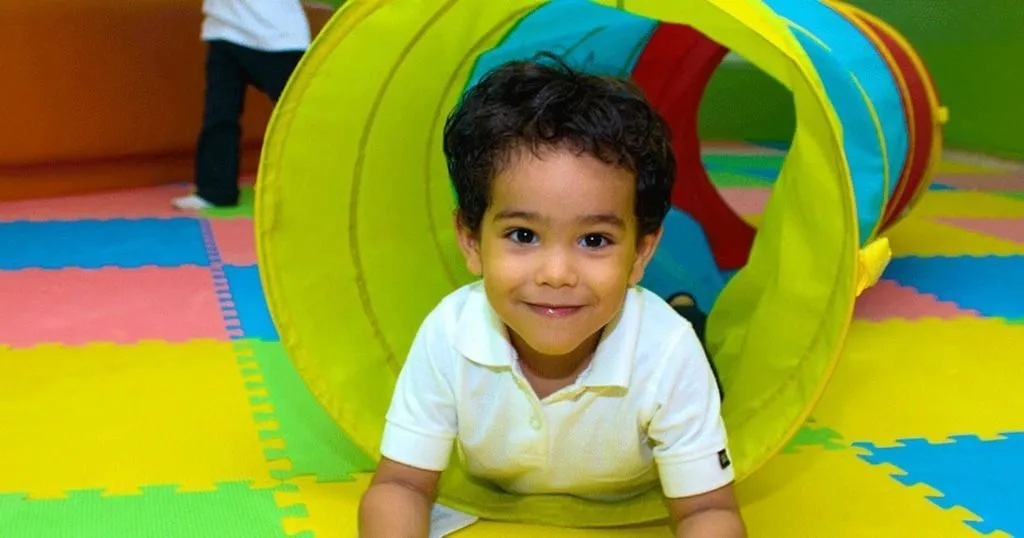The effectiveness of physical therapy sessions for children with cerebral palsy

Researcher Sébastien Vanderlinden is committed to describe which and how long physical therapy skills are performed during NDT sessions.
Posted by
Published on
Fri 14 Dec. 2018
Topics
| Behavioral Research | Child Development | The Observer XT | Video Observation | Developmental Disorder |
In this guest blog post, researcher Sébastien Vanderlinden from Belgium writes about his study around the effectiveness of physical therapy for children with cerebral palsy.
Cerebral palsy is a developmental disorder and is caused by damage to the motor cortex of the brain. This is the part of the brain that affects muscle control and coordination. Children with cerebral palsy frequently struggle with walking and fine motor skills.
VanderLinden is searching for other physical therapists and Ph.D.'s who are willing to participate in his study.
Validation of an evaluation protocol to describe and quantify the therapeutic content performed during neurodevelopmental physical therapy (NDT) sessions of children with cerebral palsy
In recent years, an intensification of studies that document the effectiveness of physical therapy for children with cerebral palsy (CP) resurfaced. According to a recent systematic review of Novak [1], which focuses on therapeutic interventions, it seems that the recommendation not to practice neurodevelopmental therapy (NDT, of which the terminology is based on the Bobath Concept - http://www.bobath.be/fr/Info/Worldwide and had been used in research for many years) needs to be considered.
Evidence regarding the effectiveness of this therapy is still developing today. This systematic review thoroughly details the limits and motivating arguments of this point of view, and to a certain extent, encourages the content of this pilot study.
Analyzing therapy sessions with The Observer XT
The main goal of our study is to validate an evaluation protocol including the use of a measurement tool, The Observer XT, that could be used to describe and quantify the therapeutic content performed during a NDT session for a child with CP and its associated procedures. As Novak mentions it, there is a lack of published scientific data that describes which and how long physical therapy skills are performed during NDT sessions.
Neurodevelopmental therapy has been medically prescribed and practiced worldwide for nearly half a century by physical therapists as well as occupational therapists and speech therapists, who have completed its regulated NDT basic 8 weeks course.
Within the clinical settings, if its main indication has always been cerebral palsy, it also remains a therapy of choice for the (re)habilitation and parental guidance of newborns and children under 24 months with developmental neuromotor delay.
A problem-solving approach
In addition to this target population, this therapy seems to provide relevant clinical benchmarks for clinical assessment and rehabilitation of the children who suffer from a multiple handicap, from a progressive disease of the central nervous system, or from other related medical conditions. It is relevant to be reminded that NDT fits within a broader "concept" (sometimes called "approach") facing the child suffering with cerebral palsy.
The NDT concept could be defined as "a problem-solving approach to the assessment and treatment of individuals following a lesion of the central nervous system that offers therapists a framework for their clinical practice" or therapeutic content performed during a neurodevelopmental physical therapy session of a child with cerebral palsy.
Sébastien Vanderlinden
Belgium
Research in PT & Neurorehabilitation
[email protected]

References
- Das, S.P. et al. (2019). Evidence-based Approach to Physical Therapy in Cerebral Palsy. Indian J Orthop. 2019 Jan-Feb; 53(1), 20–34.
- Marsico, P.; V Graser, J. & Hedel, van H.J.A. (2018). Based on evidence? Techniques applied in Neuro-Developmental Treatment within the Bobath Concept: an AACPDM report. https://www.crd.york.ac.uk/prospero/display_record.php?RecordID=48583
- Novak, I.; McIntyre, S.; Morgan, C.; Campbell, L.; Dark, L.; Morton, N.; Stumbles, E.; Wilson, S.A. & Goldsmith, S. (2013). A systematic review of interventions for children with cerebral palsy: state of the evidence. Developmental Medicine & Child Neurology, 55 (10), 885-910.
- Novak, I.; Morgan, C.; Fahey, M.; Finch-Edmondson, M.; Galea, C.; Hines, A.; Langdon, K.; Mc Namara, M.; Paton, M.C.B.; Popat, H.; Shore, B.; Khamis, A.; Stanton, E.; Finemore, O.P.; Tricks, A.; Velde, A. te; Dark, L.; Morton, N. & Badawi, N. (2020). State of the Evidence Traffic Lights 2019: Systematic Review of Interventions for Preventing and Treating Children with Cerebral Palsy. Current Neurology and Neuroscience Reports, 20 (3). https://doi.org/10.1007/s11910-020-1022-z
- Mayston, M.,J.; Saloojee, G.M. & Foley, S.E. (2023). The Bobath Clinical Reasoning Framework: A systems science approach to the complexity of neurodevelopmental conditions, including cerebral palsy. Developmental Medicine & Child Neurology, 00, 1-9. https://doi.org/10.1111/dmcn.15748
- Te Velde, A.; Morgan, C.; Finch-Edmondson, M.; McNamara, L.; McNamara, M.; Badawy Paton, M.C.; Stanton, E.; Webb, A.; Badawi, N. & Novak, I. (2022). Neurodevelopmental Therapy for Cerebral Palsy: A Meta-analysis. Pediatrics, 149 (6). https://doi.org/10.1542/peds.2021-055061
- Zanon, M.A.; Pacheco, R.L.; Latorraca, C.O.C.; Martimbianco, A.L.C.; Pachito, D.V. & Riera, R. (2019). Neurodevelopmental Treatment (Bobath) for Children With Cerebral Palsy: A Systematic Review. Journal Child Neurology. doi: 10.1177/0883073819852237
Related Posts

Let's work together: mother-adolescent interactions in fragile X syndrome

PCIT: Parent-Child Interaction Therapy

